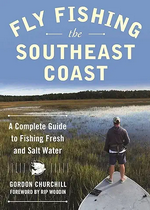Not many years ago, the fishing kayak consisted of a simple rod holder clamped on a kayak. Today’s fishing kayak has many if not most of features of a power boat, including an electronic GPS/fish finder, a battery-operated live well, a comfortable seat (including lumbar support), power anchor system, fly rod holders, camera holders, and hatches for storing tackle, first aid, and emergency kits.
This modernization and the cost savings and simplicity of owning a kayak have contributed to the rising trend in kayak fishing. One does not incur the gas, oil, and maintenance costs of outboards; one can store the kayak in one’s garage; kayaks can be transported on top of one’s vehicle or towed on a small trailer. Obvious benefits on the water are access to shallow areas not reachable by power boats, and accessing such areas quietly, not spooking the fish as occurs with larger, noisier boats.
Most “disadvantages” of a fishing kayak can be addressed. It takes longer to reach destinations but the numerous access points in our area put you close to most prime fishing areas. Tipping over is rare as most kayaks designed for fishing are wide and stable enough to stand. Space is limited but over time one learns to bring only the equipment needed for what you want to catch.
In selecting a fishing kayak, most anglers prefer a sit-on-top, pedal-driven model. These are more stable, easier to get in and out of; one has no feeling of confinement; scupper holes make them self-bailing; and they free your hands for casting.
When fly fishing from a kayak, keep it simple and bring only your rod, a box of flies you expect to use over the course of the day, a set of clippers, a set of needle nose pliers, and a landing net. The cockpit should be free of clutter and objects that can snag line.
When casting from a seated position, think in terms of a casting plane that is higher on the back cast than the forward cast. This helps deal with the possibility of slapping the water on your backcast or snagging the back cast on marsh grass in a small creek. Slapping the water behind you will reduce line speed and not allow your rod to load to its fullest potential.
Avoid this by starting your back cast slowly and accelerate smoothly as your line begins to leave the water. Stop the rod on the back cast earlier than you would normally, flipping the line high like flipping pancakes with a spatula. Maintain a firm wrist and make an abrupt stop on the backcast no further than the two o’clock position.
Before casting, make sure your fly rod tip is in or at the water surface and move your casting arm forward a bit further than you normally would. Make sure your line is straight. A fly line without slack means a much more effective casting stroke.
Keep in mind that fly casting from a kayak rocks the kayak, sending out a ripple (pressure wave). The wave alerts fish to your presence and makes them wary.
Do not rely on power to get more distance. Removing slack, accelerating smoothly to a stop, and using arm movement efficiently are the secrets to casting distance while seated in a kayak.
Casting from a standing position offers a high vantage point to sight fish and locate structure; it also enables one to make longer casts if necessary. Practice standing under controlled conditions, without your gear. Once you have perfected standing, practice standing and casting – do it in shallow water. Standing, paddling, and casting will eventually become second nature.
When stripping line, options are to spread your legs to create a space in the cockpit; strip it down into the water; or modify a stripping basket and mount it on the side of the kayak. Also see Steve Moore’s Kayak Hack Fly Fishing from a Kayak where he suggests kneeling using knee pads and creating a stripping basket using a cheap tarp.
See the club website “Fishing/Kayak Fishing” for more detailed guidance on fly fishing from a kayak.
Author: Forest Duncan



